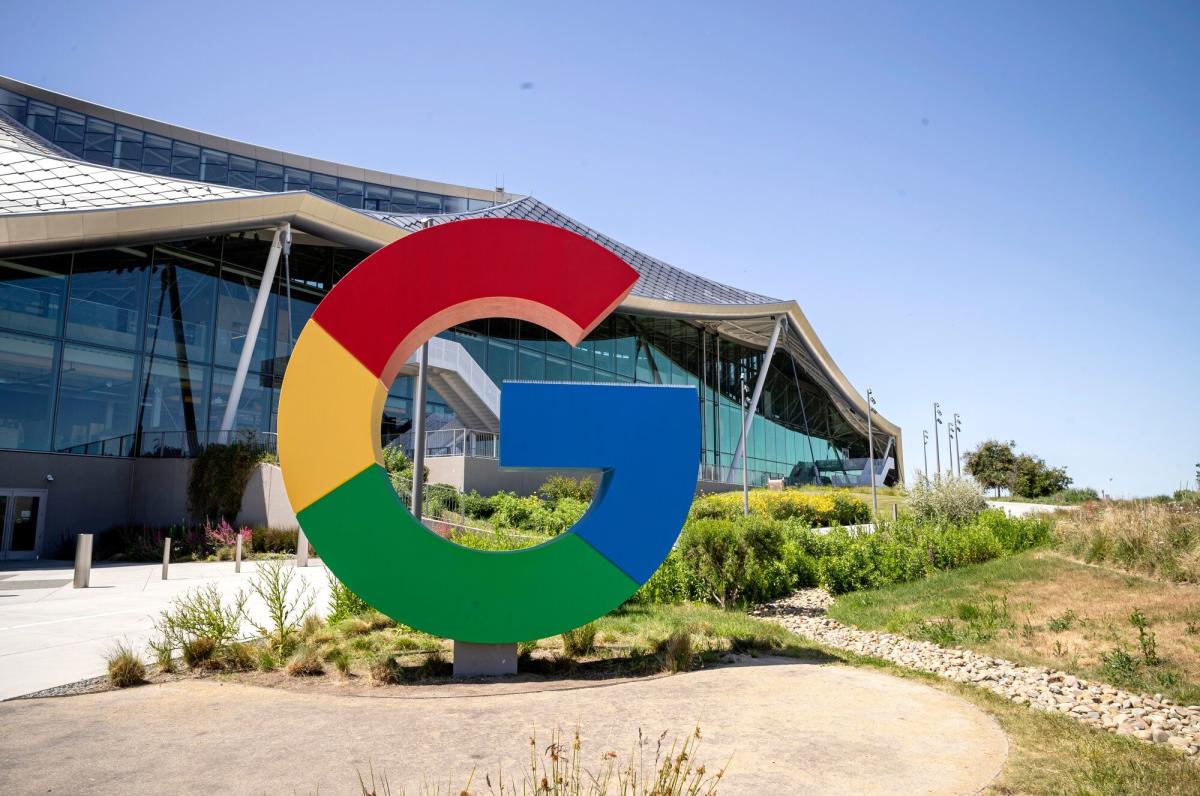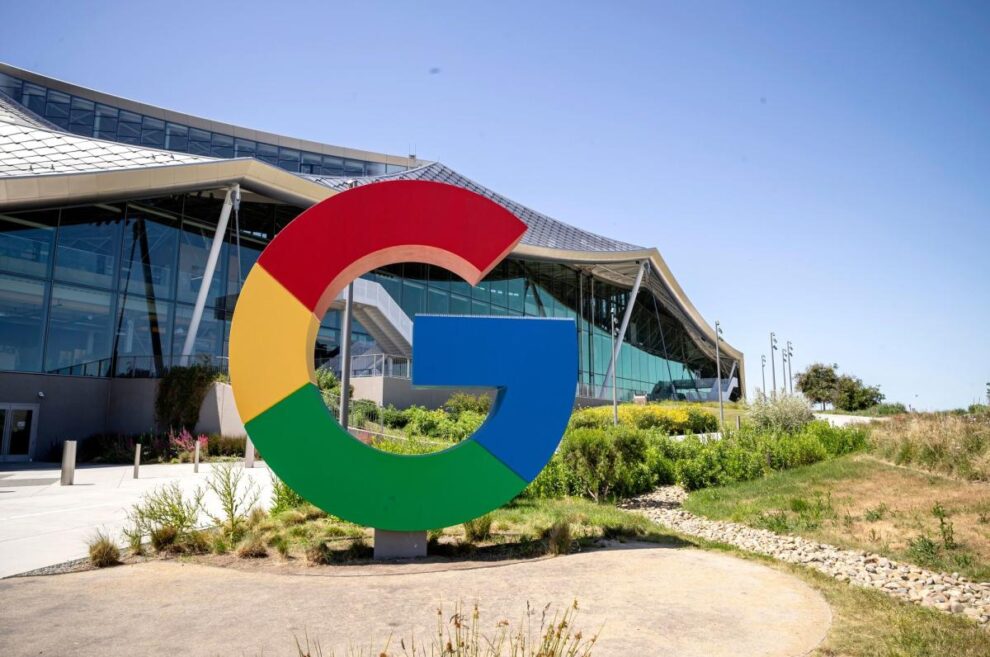
(Bloomberg) — Google’s technologies offer advertisers and publishers a safe ecosystem of tools to transact amid the intensely competitive world of online advertising, the company argued in federal court this week to counter Justice Department allegations that it is an illegal monopoly.
Most Read from Bloomberg
In a federal antitrust trial, enforcers allege that Google has monopolized the technology used to buy and sell website ads, harming publishers and advertisers in the process.
For the past week in Alexandria, Virginia, the company laid out its defense, pointing to ways that close ties between its products help it fight spam and fraud, and ways that customers can easily switch to other providers. The trial wrapped up Friday. Judge Leonie Brinkema has scheduled closing arguments for Nov. 25 with an aim toward ruling before the end of the year.
“I think DOJ has the edge and a finding of liability is more likely than not,” said Justin Teresi, an analyst for Bloomberg Intelligence who attended the trial.
Alphabet Inc.’s search giant argues it has no legal obligation to make its ad tech products work with those offered by competitors, and that on the internet, advertisers have many opportunities aside from purchasing website ads. Google competes fiercely against social networks, video streaming sites and other apps for ad dollars, its defense lawyers sought to show.
“Google is never going to tell this court that it is not a big company and that these investments and innovations have not been in its financial interest. They have been,” Karen Dunn, Google’s lead lawyer, said in opening statements. “We are one big company among many others intensely competing on a millisecond-by-millisecond basis for every single ad impression.”
Customer choice
Both website publishers and advertisers have many options aside from Google’s ad tech tools, the company said.
If a publisher doesn’t want to use Google’s tools “there are dozens, if not hundreds of pieces of tech they can use,” said Scott Sheffer, Google’s vice president for global partnerships. And there are “multiple ways to access” ad demand from Google.
In lieu of using Google’s ad server, which helps websites manage advertising inventory, they can build one in-house, as companies like Amazon.com Inc., Reddit Inc., Snap Inc. and Walt Disney Co. have done, said Mark Israel, Google’s main economic expert. Small websites can use AdSense, which offers publishers ads from Google based on their content, said Sheffer. The company also offers AdX Direct, a product that connects to third-party ad servers like those offered by Microsoft Corp. or Equativ SAS.
Under questioning by the Justice Department, Sheffer acknowledged that AdSense or AdX Direct don’t give the same access as if the publisher used Google’s ad server since it is the only one that gets real-time price information.
But even for publishers using Google’s ad server, there were ways to circumvent the tight connection to the company’s ad exchange, said Nitish Korula, engineering director for ad serving and quality. Websites could instruct the ad server to prioritize a different ad exchange over Google’s, he said. They could also boost bids by entering a higher number into the ad server than the actual bid they received to force Google’s exchange to match it, he said.
After questions from the DOJ, Korula acknowledged that few companies use the AdX Direct product. He wrote in 2020 that Google should keep it around because it might help the search giant as a “concept for antitrust.” He also acknowledged that the “boost” feature had “some downsides” since it would interfere with a website’s record-keeping.
Quality control over ads
Google, lawyers for the company said, had a legitimate business reason for tightly integrating products across its ad empire: doing so made it easier for its engineers to reduce ad spam and fraud, benefiting the entire advertising ecosystem.
Opening up its tools to third-party rivals too quickly could make it easier for nefarious actors hoping to game the system and profit from advertising scams, the company argued. On the other hand, having more insight into the ads flowing across its systems allowed Google to catch con artists more quickly.
Per Bjorke, a company product director for ad traffic quality, testified on Tuesday that Google was one of two primary companies that detected a multimillion-dollar ad fraud scheme called 3ve, leading to the shutdown of the operation and the prosecution of its leaders in 2018.
“The vast majority of the 3ve traffic we received and bought came from the third-party ecosystem,” Bjorke said. “I believe that is primarily because we made it very hard for bad actors to infiltrate our AdSense and AdX networks.”
Alejandro Borgia, Google’s director of product management for ad safety, testified that Google’s end-to-end ad tech stack made it easier for the company to increase users’ trust in ads. “If users feel unsafe, they won’t click on ads or will turn on ad blockers,” he said.
In response, the DOJ sought to show that there were other ways to fight spam and fraud besides tying together its ad products. Google, it argued, was not the only company that engaged in that work — and there were times the company wasn’t particularly effective.
Michael Freeman, a DOJ lawyer, asked Bjorke if he had heard of reports that found Google had facilitated the placement of ads on shady websites, including a 2022 ProPublica investigation that covered how Google’s ad business funds disinformation around the world.
“I don’t remember that specific report,” Bjorke said. “I probably read it at the time, but I don’t remember it right now.”
Borgia, Google’s ad safety leader, acknowledged that in July 2021, the tech company only “actively managed” 10% of its safety policies, including only two related to scams. But Borgia said that didn’t mean the company wasn’t enforcing those policies, only that it didn’t have dedicated models or teams focused on them. “We provide safety for those policies through other means,” he said, such as machine learning algorithms.
A wide open digital landscape
The government alleges that Google dominates the market for display ads shown on websites. But Google says that is just a slice of the digital advertising world today, where brands can connect with consumers on social media, in apps and on streaming video.
Israel, the Google economic expert, said advertisers can and do switch between different advertising formats, and the government should have considered advertising on apps, social media, video, and connected TV, which accounted for $140 billion spent in the US in 2022.
“Facebook, Amazon, TikTok are becoming the strongest players” in digital advertising, he said, adding that Google views them as “serious competitive threats,” where advertisers are shifting their money as needed.
Brian Bumpers, the marketing analytics manager for ecommerce site Zulily, said the company often shifts the $58 million it spends a year on advertising among different places. In 2016, Zulily spent $30 million on Google Ads, but dropped that to about $10 million the next year and increased its spending on Facebook’s platforms to $30 million.
‘No legal obligation’ to help rivals
Google argued that US law protects the company’s right to choose whether to make its ad tech products work with others. Forcing Google to provide technology and resources to make its ad tech work seamlessly with rival tools would stifle innovation, the company’s lawyer said.
The government is seeking to force Google to share its customers with competitors, said Dunn, Google’s lead lawyer.
When the government says “that rival exchanges need to have comparable access to Google Ads demand,” she said, “that’s our customer base.”
Israel, the Google economic expert, said making Google provide rivals with the same access to its tools would harm competition and amount to “forced interoperability.”
Google’s ad exchange AdX was built before real-time bidding was developed, said Korula, the engineering director. “It would take years to rebuild” Google’s exchange to allow that functionality, he said.
“We didn’t prevent other exchanges from submitting real-time bids” into the ad server, Korula said. No company ever offered to undertake the technical work and expense to make their exchanges work with Google’s products, he said.
The Justice Department argued that Google has already undertaken much of the technological work that needs to happen to make its products operate seamlessly with rivals.
In 2019, it started a project internally code-named Project Yavin to connect its exchange to the in-house ad servers operated by Microsoft’s LinkedIn and eBay Inc. It has also already let its ad network, Google Ads, bid on certain types of ads in other exchanges and could expand that feature more broadly.
Most Read from Bloomberg Businessweek
©2024 Bloomberg L.P.






